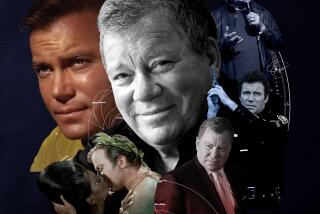Saxophone’s Future Shiny Indeed
- Share via
Jazz in the ‘90s may not have the innovative stars it did in the ‘50s and ‘60s, but there’s no denying its diversity, especially in the latter half of the decade. And there are some distinctly promising new stars beginning to glow in the immediate horizon.
Take the jazz saxophone. These four new recordings--two from veteran players, two from young artists in their early outings as leaders--are fascinating examples of ways in which stylistic trends are reexamined and redeveloped into new ideas.
Redman, 66, the father of tenor saxophonist Joshua Redman, is a significant player in his own right, best-known during the avant-garde years of the ‘60s. The performances, recorded in late 1996 at Ronnie Scott’s club in London, are seasoned with a few well-played standards, but the heart and soul of the album is an updating of the high-flying, wide-open improvising of the ‘60s.
Redman, however, is too thoughtful to simply open the ducts of spontaneous improvisation. Although the players (the gifted Italian pianist Rita Marcotulli, bassist Cameron Brown and drummer Matt Wilson) have plenty of room to play freely, Redman has structured the tunes in ways that afford contexts for the listener to experience the free soloing, transforming a ‘60s style into a palatable ‘90s musical experience.
McLean, one year to the day younger than Redman, was one of the most individual of the post-Charlie Parker alto saxophonists. Interestingly, there are a number of places in this new septet outing in which his playing takes on distinctly edgy, avant-garde qualities. More often, the tracks are reminiscent of the vigorous, hard-swinging music on his early Blue Note LPs.
The performances include strong soloing from his tenor saxophone player son Rene McLean and trombonist Steve Davis, as well as some sloppy ensemble work. But the center of attraction is McLean’s alto. Like Redman, he is as vital as ever, playing in a style that is still alive, reviving a solid connection with the visceral energies of hard bop.
Turner and Tardy represent the second wave of new young lions. Tardy is a hot, driven player whose music reflects the energies of his early work with Elvin Jones’ Jazz Machine. Adept with the basics of bebop, his playing also is seasoned with acerbic traces of avant-garde, contrasted by a dark ballad style tinged with traces of John Coltrane and Dexter Gordon.
Working with a virtual all-star band--including pianist Mulgrew Miller, bassist Reginald Veal and trumpeter Tom Harrell--Tardy sounds like a comer. Still not quite settled into his own original groove, he has the technical capacity and musical imagination to become an important new jazz voice.
And that’s a label already applicable to Turner, whose Warner Bros. debut stamps him as a player whose first-rate ability is matched by a probing musical intelligence. Cooler in concept and sound than Tardy, his soloing combines the seemingly disparate styles of John Coltrane and Warne Marsh into something reflective of those sources, yet uniquely new.
On several of the well-chosen pieces, tenor saxophonist and label mate Joshua Redman joins Turner, producing stirring results, especially on Lennie Tristano’s “317 E. 32nd St.” (which reinforces the Warne Marsh connection) and Ornette Coleman’s “Kathelin Gray.” The music is further enhanced by the extraordinary playing of Venezuelan pianist Edward Simon--like Turner, a potential major jazz presence. The future of the jazz saxophone is beginning to look brighter than it has in years.
*
Albums are rated on a scale of one star (poor), two stars (fair), three stars (good) and four stars (excellent).
More to Read
The biggest entertainment stories
Get our big stories about Hollywood, film, television, music, arts, culture and more right in your inbox as soon as they publish.
You may occasionally receive promotional content from the Los Angeles Times.










